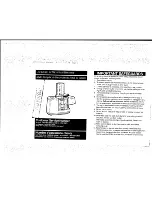
Zynq-7000 AP SoC and 7 Series FPGAs MIS v4.1
247
UG586 November 30, 2016
Chapter 1:
DDR3 and DDR2 SDRAM Memory Interface Solution
Debug
• Verify
DQS
is toggling on the board. The FPGA sends
DQS
during Write Leveling. If
DQS
is not toggling, something is wrong with the setup and the General Checks section of
this answer record should be thoroughly reviewed.
• Verify fly-by-routing is implemented correctly on the board.
• Verify
CK
to
DQS
trace routing. The
CK
clocks should be longer than
DQS
. The
recommended value for additional total electrical delay on
CK
/
CK
# relative to
DQS
/
DQS
# is 150 ps, but any value greater than 0 ps is acceptable.
• The Mode Registers must be properly set up to enable Write Leveling. Specifically,
address bit A7 must be correct. If the part chosen in the MIG tool is not accurate or
there is an issue with the connection of the address bits on the board, this could be an
issue. If the Mode Registers are not set up to enable Write Leveling, the 0-to-1
transition is not seen.
Note:
For dual rank design when address mirroring is used, address bit A7 is not the same
between the two ranks.
• When
dbg_wrlvl_err
asserts (equals 1), users must determine during which of the
three different stages write leveling is performed the failure occurred. Set the ILA
trigger to
dbg_wrlvl_err
= R and look at the other “DDR Basic” signals to see which
stages completed.
a. If only PHASELOCK and
DQSFOUND
completed, the write leveling failure occurred
during the initial run through.
b. If
dbg_wrcal_start
did not assert, the write leveling failure occurred after
OCLKDELAYED calibration.
c. If
dbg_wrcal_start
asserted but
dbg_wrcal_done
did not, the write leveling
failure occurred during the final run through during Write Calibration.
• When
dbg_wrlvl_done
asserts (equals 1) and the results of each Write Leveling stage
is of interest, separately use the following three ILA triggers to capture the Write
Leveling tap results for each stage. Seeing how Write Leveling completed is useful to
see how far apart the taps are for different
DQS
byte groups.
a.
dbg_wrlvl_done
= R
b.
dbg_wrcal_start
= R
c.
init_calib_complete
= R
• To capture the write leveling results at each stage, change/increment
dbg_dqs
on the
VIO and set the appropriate trigger as noted above. Look at the taps results and record
in the “7 Series DDR3 Calibration Results” spreadsheet. Later releases of the MIG tool
include results for all
DQS
byte groups removing the need to use
dbg_dqs
.
















































